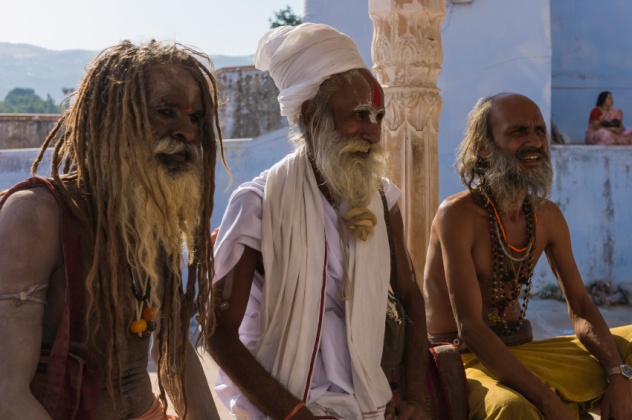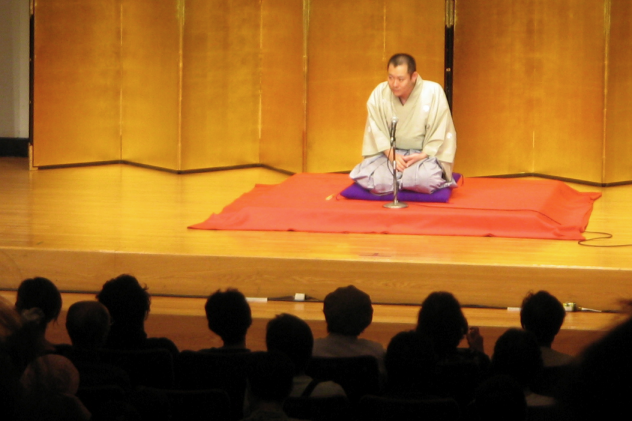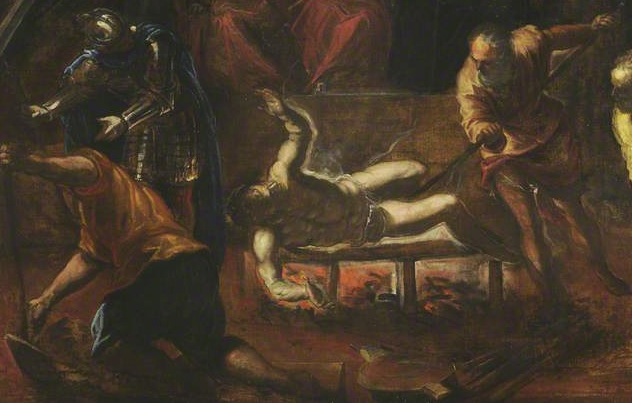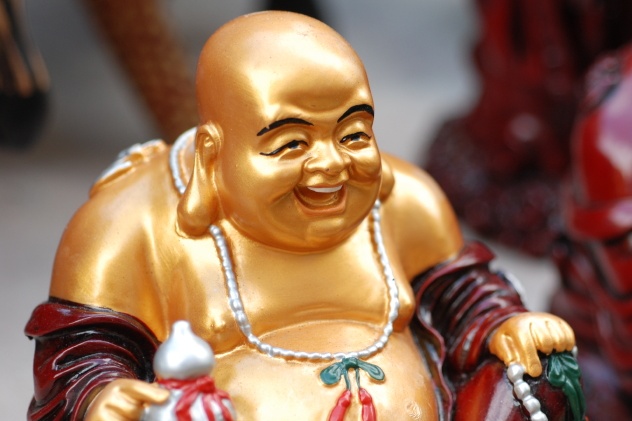10 Hija
There are interesting theological implications for humor in the Islamic world, which has always been a part of Islamic literary tradition but has been criticized by many as disrespectful and heretical since the Middle Ages. Mohammad was said to have condemned humor (mezah) in the Quran, and there is the implication that too much lightheartedness is dangerous. But there was also a tradition known as motayeba or “gentle teasing,” which the Prophet engaged in. He supposedly once said that old women couldn’t enter Paradise, but when he noticed that an old lady seemed understandably upset by this, he clarified, “God first makes them younger than they ever have been.” When Greek comedies were first translated into Arabic, they were associated with a satirical form of Arabic poetry known as hija, sometimes translated as “taunting.” Some say it was first developed by the Afro-Arabic satirist Al-Jahiz in the ninth century, who lampooned human psychology. In one notable work, he satirized the desire for a longer penis by saying, “If the length of the penis were a sign of honor, then the mule would belong to the [honorable tribe of] Quraysh.” Satire was introduced into Persian literature in the 14th century by Obeyd-e Zakani, a bitter social satirist. One of his anecdotes states, “Someone had stolen Talhak’s shoes when he was in a mosque and thrown them into a church. He said in amazement, ‘It is strange that I am a Moslem and my shoes are Christians.’ ” Another said, “A muezzin would call out and then run. He was asked, ‘Why are you running?’ He said, ‘They said that my voice is beautiful from afar. I was running so that I could hear it from a distance.’ ” Many viewed comedy as the “art of reprehension” and condemned obscene verse, but a surprisingly large amount of hija has survived to the modern day. Some argue that the invective poetry form originated in pre-Islamic traditions of cursing supernatural entities. Still, hija was often used as a prelude to violence, as it was humiliating and often caused a reaction, though in nonviolent situations it may simply have led to an exchange of hija, the medieval Islamic equivalent of a rap battle.
9 Hasya Rasa
In Sanskrit literature, the comedy tradition was known as hasya rasa, and it was codified as one of the eight “sentiments” (rasa) of literature in the ancient Indian treatise Natya Shastra. Hasya was meant to elucidate mirth or joy in the audience. Some aestheticians have analyzed how the genre affected different classes in society, with upper-class observers smiling and snickering, the middle class laughing loudly, and the lower classes guffawing with tears streaming down their faces. They also distinguished between people laughing by themselves (atmastha) and a person making others laugh (parastha). Classical Sanskrit farces were known as prahasana, which were often meant to mock figures of temporal or religious power, such as Brahmins, yogis, ascetics, and monks. These were justified as a means of addressing wrongs in society. One seventh-century farce questioned the idea that the Buddha had forbidden monks from enjoying wine and women, reasoning that such rules were more likely developed by bitter, jealous old men to deny young men enjoyment. A ninth-century comedy turned its attention to the ascetic Jains and their perceived pious hypocrisy, depicting a naked and lusty ascetic arguing with a nun, who leaves. A young boy disguises himself as a woman and approaches the ascetic, who advances on the boy in delight until he reaches down his pants and discovers his genitals, his disappointment being hilarious to the watching audience. Much of the humor was derived from the fact that Sanskrit was considered a sacred language of gods, priests, and the intelligent, yet the content of prahasanas was often profane. In such performances, male and female prostitutes often acted as foils for comically sanctimonious figures of authority like doctors, priests, and generals. They also served as stock characters in comic monologues called bhana, which audiences found hilarious for their physical humor, hyperbole, and shameless audacity.
8 Ancient Egyptian Comedy
Records from texts, paintings, and even tombs have revealed that the ancient Egyptians were big fans of bawdy humor and political satire. One of the oldest jokes in the world was translated from a roll of papyrus: In 2600 BC, court magician Djadjamankh asked King Snefru: “How do you entertain a bored pharaoh? You sail a boatload of young women dressed only in fishing nets down the Nile and urge the pharaoh to go catch a fish.” This was apparently a political satire, with the fishing trip representing the cosmic inevitability of the dynasty’s rule. The lower classes often used comedy to get one over on the higher classes, even nobility and the pharaoh himself, who was sometimes portrayed as unshaven or effeminate. Slapstick, drunkenness, scatological humor, and animal-based humor were also well-represented. These often featured reversals of usual class rules, showing mice, representing the common people, defeating and being waited on by cats, representing the nobility. Scott Noegel, president of the northwest chapter of the American Research Center in Egypt, described the Egyptian obsession with animal humor, with “ducks pecking at someone’s buttocks, baboons and cats out of control, animals riding on top of other unlikely animals, baboons playing instruments, and animals drinking and dining.” Early forms of racial humor were also apparent, as the Egyptians would lampoon their neighbors to the south in the land of Punt, portraying their queen as having “folds of fat hanging over her knees and elbows, her back is crooked and she has an aqualine nose.” In the tomb of Tutankhamun, the enemies of Egypt were portrayed in ludicrous submissive positions, appearing on the king’s footstool or at the bottom of his sandals.
7 Crosstalk
The art of xiangsheng (“face and voice”), otherwise known as “crosstalk,” developed in China’s late Qing dynasty, particularly following the death of the Emperor Xianfeng, when a ban on entertainment during the official mourning forced opera singers to perform on the street. They developed a new form of street theater using slapstick to attract crowds. By the start of the 20th century, this had moved to teahouses and theaters. During the political unrest of the 1930s and 1940s, crosstalk humor became politically incorrect and bawdy, both as a distraction from the chaos and as a satirical riposte against it. Common targets in such performances were corrupt officials, prostitutes, rural country folk, and the political elite. After the communist takeover in 1949, crosstalk was yet another form of cultural art that was instructed to praise (gesong) rather than to satirize (fengci). A “Committee for Crosstalk Reform” was set up, which went through hundreds of traditional routines that were considered contrary to communist political attitudes or too risque for the puritan Maoists. Controversial pieces like the scatalogical and slightly disturbing Drinking Milk and the double entendre–filled The Birdie that Doesn’t Chirp vanished in the new political atmosphere, replaced by safer, “revolutionary” pieces. This was ironic, as Mao Zedong was a fan of crosstalk and requested private showings at his Zhongnanhai residence, preferring the traditional routines to the new communist ones. Many of the performers were understandably nervous about performing in front of him, though, with one preferring the more relaxed Zhou Enlai as an audience. While the form has yet to revive its satiric edge of the pre-communist period, it has loosened more recently. In the period after the Cultural Revolution, crosstalk was revived somewhat, as many took it as a chance to criticize the excessive zeal of past years. In one skit, a customer at a “revolutionary photography shop” and its clerk must exchange political slogans during all transactions: Customer: “Serve the People!” Comrade, I’d like to ask a question. Clerk: “Struggle Against Selfishness and Criticize Revisionism!” Go ahead. Customer: [to the audience] Well, at least he didn’t ignore me. [Back in character] “Destroy Capitalism and Elevate the Proletariat!” I’d like to have my picture taken. Clerk: “Do Away with the Private and Establish the Public!” What size? Customer: “The Revolution is Without Fault!” A three-inch photo. Clerk: “Rebellion is Justified!” Okay, please give me the money. Customer: “Politics First and Foremost!” How much? Clerk: “Strive for Immediate Results!” One yuan three mao. Customer: “Criticize Reactionary Authorities!” Here’s the money. Clerk: “Oppose Rule by Money!” Here’s your receipt. Customer: “Sweep Away Class Enemies of All Kinds!” Thank you.
6 Flatulism
Scatological humor is nearly universal and has a long and distinguished history in the Western world. In 12th-century England, King Henry II had a large entourage of jesters, nunbulatores (clowns), buffoons, and storytellers to keep him entertained, but Christmas was reserved for something special. Roland le Fartere was a professional flatulist, or fart-performer, who was in charge of the annual Christmas performance of unum saltum et siffletum et unum bumbulum (One Jump, One Whistle, and One Fart). His aptitude at performing was well-rewarded; he was said to hold the title to land and a manor in Hemmingstone, Suffolk. Ireland in the 16th century was also home to many professional farters, who were called braigetoiri, though their role was most likely to set their farts on fire for their patrons’ amusement. An early law tract referred to them as performers who practiced their craft “out of their backsides.” This storied tradition was revived in the 19th century by the Frenchman Joseph Pujol, who discovered while swimming in the ocean that he could inhale water through his anus while he was underwater. Through practice, he discovered that he could bring forth great spouts of water, and then through manipulation of the air, he learned to produce distinct notes and basic tunes. His art made him popular in school and while serving in the army. After a brief distraction opening a bakery, Pujol turned his mind to the stage. He debuted as “Le Petomane” in Marseilles in 1887, winning over the audience with his mastery of petomanie (“fartistry”). He ended up as a performer at the famous Moulin Rouge. His act included fart impressions, songs, blowing out candles, imitations of thunderstorms and cannon fire, smoking cigarettes from both ends, and even playing the ocarina. While he became the highest-paid entertainer for a time, he was sued for breach of contract due to farting at people in public and was replaced by a woman using a bellows to achieve the same effect. He opened his own theater, performing until his sons were wounded in World War I. When Pujol died in 1945, his family rejected a request by the medical community to examine his anus, saying, “There are some things in this life which simply must be treated with reverence.”
5 Rakugo
This Japanese comedy form of “sit-down” storytelling is believed to have its origins with otogishu jesters employed by the samurai in the late medieval period, as well as in Buddhist preaching during the 17th and 18th centuries. As most people were illiterate back then, preachers would invent humorous stories to engage listeners as they gave oral instruction in Buddhist teachings. By the end of the 18th century, the form had solidified into a discrete form of entertainment, though it would not be referred to as rakugo until the Meiji period. Usually, a performer would sit on his knees on a small cushion during a performance, which could last up to 20 minutes. They’d usually dress in a traditional kimono, with sometimes long, wide hakama pants and a formal haori jacket. As props, they’d use a fan (sensu) and a handkerchief or hand towel (tenugui), which could stand in for other objects like chopsticks, cigarettes, books, or banknotes as the performer acted out his performance. Many performers learned to earn a living through rakugo, performing in storytelling rooms or in halls called yose. Narratives became established, and a tradition developed in which established rakugo performers took on apprentices, who learned the methods and techniques of the art while performing tasks and housework for their masters. One of the most famous rakugo masters was Sanyutei Encho, who began performing at the age of seven and became renowned for his humorous romantic and ghost stories in the 19th century. Differences in dialect and form were apparent in the rakugo performed in the port city of Osaka and the capital, Edo (now Tokyo). In Osaka, storytellers used a small table and standing board, banging on the table to signify the start of a story or a scene change and often incorporating shamisen and taiko drum music. They also advertised stories weeks in advance. Edo performers were more sedate, as well as more improvisational, often not determining what stories they would tell until the performance had actually begun. The reason for the distinction was that Edo was a samurai city, and many rakugo stories involved making fun of the samurai elite. Without knowing whether there were samurai in the audience, storytellers had to test the waters first in order to see if it was safe to get to their better material, lest they be confronted by angry samurai after the show. Osaka, on the other hand, was a merchant city. There were fewer worries about angry samurai and more concerns about attracting an audience through rowdy outdoor performances and colorful preambles to draw in onlookers.
4 Mesoamerican Humor
The Maya have a long history of humor, traditionally relying on wordplay and double entendres. In 1774, an interpreter at the Merida Holy Office was presented with a petition against the scandalous behavior of four priests. The petition itself was signed anonymously, probably due to the fact that the accusations were bawdy, ridiculous, and unlikely. It claimed that during mass, transubstantiation didn’t happen due to the priests having erections. It named the hometown of one priest’s mistress as Pencuyut (which could mean “fornicating coyote”). The petition ended with, “God willing, when the English come may they not be fornicators equal to these priests, who stop short only at carnal acts with men’s arses. God willing, let smallpox be rubbed into their penis heads. Amen.” For the Maya, use of their native tongue to tell jokes gave license to engage in risque and scatalogical humor in cross-gender settings, something they would usually avoid if speaking in Spanish. Ritualized humor at fiestas was also very important, allowing for critique of social issues, outsiders, and power-holders. Some argue that the humor of both the Maya and the Nahuatl Aztecs was informed by the spirit of the trickster, combining humor with terror and creating a distinctly macabre comedy scene. Humor was linked to chaos and filth, and the Yucatec Maya word for “farce” was tah or taa, while the word for “dirt” was ta. According to Spanish writers, ritual humor was also an important part of festivals in the Aztec empire, chiefly the festival in honor of Quetzalcoatl, in which ritual comedy proceeded in four acts. In the first, a buffoon pretending to be covered in painful boils walked around complaining and making witty comments to the audience. He was followed by four old men, two blind and two nearly blind, who would argue with each other humorously. They were then followed by a man pretending to cough and be seriously ill. The final performance involved two men dressed in realistic insect costumes, one a fly and the other a black beetle. Other Aztec holidays featured humor, including dances performed by hunchbacks and female impersonators. Some imitated drunk or mad old women, and others used ethnic humor by mimicking the appearance and speech patterns of neighboring tribes. Most nobles of the Central Mexican Plateau employed jesters, including a class of people who were renowned for doing tricks with logs of wood using only the soles of their feet. Many such performances were the precursors of modern loa performances, which combine humorous discourse with a dramatic play about a Christian saint.
3 Hagiographical Humor
The foremost creative form of the Middle Ages was written by monks cloistered in monasteries about the lives of Christian saints, which doesn’t exactly sound like a lot of laughs. But from at least the fifth century, comedy in hagiography was quite common, a spirit which the historian Ernst Curtius called “grotesque humor within a sacred poetic genre.” As odd as it may sound, such humor was often linked with depictions of torture suffered by the saints. In one account, Saint Lawrence is being roasted alive on a bed of burning coals and is ordered to give an offering to pagan gods. He replies, “I offer myself to the almighty God with an odor of pleasantness.” He would later tell his torturers that he was done on one side, so they had better turn him over. Such humor reduced the torturers to figures of buffoonery, while the martyrs themselves came across as superior and dominant. One story details how three martyred women, Saints Agate, Chionia, and Irene, were saved from rape at the hands of their captor, Dulcitius: “As soon as he saw these virgins, he was excited to shameful lust, and at night he entered the house where the virgins prayed to Christ, intending to defile them. Kettles and pans had been put in there, and by the power of God he was turned away from the virgins, and he embraced the kettles and kissed the pans, so that he was all black and sooty . . . ”
2 Tantric Humor
The esoteric Buddhist school of Tantra has literature which contains a lot of both excessive language and humor, but it is often unclear where the line is drawn between them, as there are few boundaries that Tantric literature will not cross for its own purposes. Such Tantric teachings skirt the line between the grotesque and comical, featuring messages undermining the solemnity of established Buddhist teachings. One early text, the Mahamayuri-vidyarajni-dharani, tells of a young monk named Svati, who is sent to collect firewood to heat bathwater but is bitten by a black snake. As Svati foams at the mouth, his friend, Ananda, runs to the Buddha to tell him what happened. The Buddha says he should cast the Kingly Spell of the Great Peacock and launches into a very detailed explanation of the Peacock King and the various spirits, ghosts, and demons that the spell overcomes. He then lists 60 pages’ worth of demon names, demands, and instructions, all while Svati continues to froth at the mouth, slowly dying. Despite being an ostensibly serious story, the timing, language, and absurdity brings to mind a Monty Python skit. In a Tantra initiation ritual, a liturgy was used which sounds like an obscene parody. A naked woman would spread her legs before an initiate and ask, “Can you stand to consume my filth, my love, to eat my shit, to drink my piss, to suck the blood from my cunt?” The right answer was, “Of course, I must practice devotion to women until I realize the very essence of enlightenment.” The analysis that follows makes it clear that it is an analogy, declaring that women are the Buddha, the Order, and the Way. Exactly how straight-faced the people involved in these ceremonies were is a mystery of history.
1 Holocaust Humor
For many Jewish victims of the Holocaust, humor served as a defense mechanism to psychologically cope with the horrors and death that confronted them. It helped to maintain mental stability, fostered social connections, reduced stress, and helped to distract by establishing a temporary sense of normality and subjectively reducing the terror being experienced. It reflected the wisdom of a Yiddish folk saying: “If your heart hurts, laugh it off.” An Israeli study interviewed Holocaust survivors about the humor of the period, which had been a taboo subject. Some humor was self-directed. One interviewee confessed that when she and other women had their hair forcibly shaved by the Nazis, she reacted by laughing and asking her friends who their hairdresser was. Another mentioned arriving by train at Auschwitz and straining to get a look out the window. When a friend asked her what she wanted to see so badly, she replied that she was looking out for the conductor since she didn’t have a ticket. Humor also helped to express aggression, particularly toward the Nazis. One joke was reported as saying, “The Germans came into Warsaw and everywhere they went they would say: ‘Jews out, Germans in,’ and this is how they get to the Jewish cemetery . . . ” Holocaust humor is still a point of bitter contention. Rabbi Jason Miller noted while it can be acceptable at the hands of someone like Mel Brooks or Sarah Silverman, if it is handled insensitively it can lead to serious offense. But at the time of the Holocaust itself, things were different. According to one survivor: “Look, without humor we would all have committed suicide. We made fun of everything. What I’m actually saying is that that helped us remain human, even under hard conditions.” David Tormsen wonders if xiangsheng and flatulism can’t be combined somehow. Email him at [email protected].
























